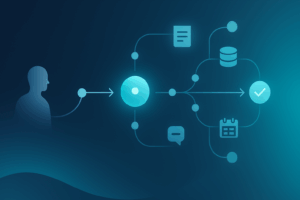If you’re looking to understand how to modernize legacy applications, there are quite a few paths and approaches to choose from. Today, let’s look at “Full PaaS” modernization, which re-architects legacy applications to target cloud-native “serverless” technologies wherever possible.
This can solve many of the most common challenges organizations face when dealing with legacy applications:
- The need to provide modern capabilities, innovate faster with limited resources
- Your existing infrastructure is expensive and difficult to provision, maintain, scale, secure
- Your existing staff could improve efficiency by focusing on their strengths
- Your customers expect evolving, innovative functionality that relies on expensive, complex underlying technology
Why “Full PaaS” Modernization Is Different
Using this approach of PaaS in cloud computing allows your company to take advantage of the “best of the best” that the public cloud has to offer, including:
- The responsibility for delivering platform quality shifts from IT staff to industry experts (uptime, security, etc.)
- Managed offerings for all application components provide peace of mind and zero day-to-day maintenance.
- You can immediately and automatically leverage the innovation and improvements being applied (almost constantly) to the underlying cloud platform.
Once your application is migrated, you’ll enjoy vastly improved speed, flexibility and agility. Modern PaaS platforms offer opportunities to automate and extend delivery processes as a core feature of the service, which creates a lower barrier to entry to incorporate modern, innovative technology for improvement of your software products.
And of course, we can’t talk about moving applications to the cloud without mentioning the cost savings and lower total cost of ownership. You’ll eliminate significant effort required to build, maintain, and evolve the “foundation” of your application’s infrastructure (servers, networking equipment, monitoring stack, data backup and disaster recovery, etc.). This, in turn, will let you focus your development resources on core competency, avoid inefficiencies related to effort not directly focused on improving the quality of your software products.
Sounds Great! Any Drawbacks?
Well, yes. There are a few things to consider before taking this PaaS cloud computing approach:
- More significant application refactor or re-architecture could be required, which can include more significant up-front investment.
- More potential for vendor lock-in specific to a specific cloud provider than other modernization approaches.
- Existing staff may need to invest in modernizing existing skillsets and deeply ingrained ideas about “the way things are done” – instead emphasizing “software-defined” principles (networking, automation, monitoring).
This approach targets the highest level of maturity for cloud adoption, where you’re consuming cloud native features as a service to provide all of the building blocks for your application. This won’t fit right away for all situations, as organizations balance an application’s internal dependencies with the need to modernize. However, this approach can provide significant benefit for legacy application teams given the right circumstances.
CHECK OUT OUR WHITEPAPER & LEARN ABOUT CLOUD-BASED APP MODERNIZATION APPROACHES
So Is “Full PaaS” the Right Approach For Me?
Now that we’ve walked through how to modernize legacy applications with this approach, the question is: is it right for my organization? AIS looks for the following characteristics when evaluating this approach:
- The team is willing to invest a bit more time and money up front to modernize in return for the benefits listed above.
- The team has significant challenges managing infrastructure which aren’t fully addressed by more basic lift-and-shift or “containerization” app modernization approaches. In many cases this comes from a slow erosion of operations and maintenance (O&M) staff over time, leaving developers responsible for all portions of development and delivery.
- The team is interested in providing evolving features, but is constrained by the lack of innovation on the current platform.
- The team releases updates/features too infrequently and is under pressure to improve the “cycle time.”
Interested in learning more? We took a look at the specific steps involved in the “Full PaaS” cloud computing modernization approach. You can also take a look at an example of a successful legacy app modernization project the AIS Team recently completed.
GET YOUR ORGANIZATION ON THE RIGHT TRACK TO TRANSFORMATION. CONTACT AIS TODAY TO DISCUSS YOUR OPTIONS.






